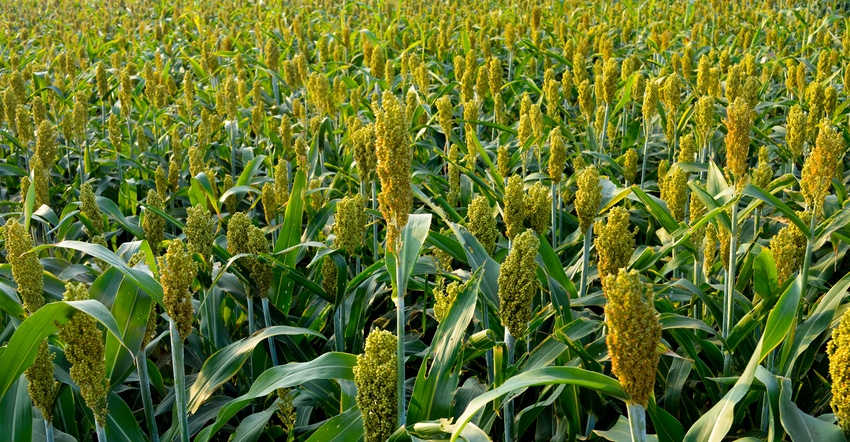
Proso millet has been grown in the U.S. for about 50 years — including in Nebraska and neighboring states. In that time, however, there hasn't been much investment in breeding the crop.
Through his company, Dryland Genetics, James Schnable, associate professor in the University of Nebraska-Lincoln's Department of Agronomy and Horticulture, has been sequencing the genome of proso millet to improve yield and agronomic performance of the crop.
The idea came while Schnable was working on his postdoctoral degree at the University of Missouri.
"I had come across this grain, proso millet, for something completely unrelated," he says. "We had done an experiment starting at the seedling stage in the greenhouse, and I neglected to tell anyone to throw the plants out. So, they were sitting in the corner of the greenhouse, didn't get watered at all, and they still flowered, still made grain. That was striking to me. I started reading more about it, and it turns out this is a grain crop that doesn't produce the highest yields, but it produces the most grain per inch of water of any grain, anywhere in the world."
"I think proso millet cultivation is poised to expand dramatically," Schnable adds. "More so in Colorado than in Nebraska, they have a legal system where it's relatively straightforward for people to buy agricultural land, strip off the water rights, sell them to a city, and you're left with land that is very hard to use for any production at all. Having a crop that can still grow on this land is going to be beneficial to the communities and is for food security."
So, Schnable's goal is to increase yield and agronomics, building on the crop's natural capacity to use water more efficiently. However, there are other key focus areas for breeding proso millet.
It's often harvested by windrowing before letting it dry in the field. And Schnable notes with a few improvements through breeding, proso millet may be a more attractive option for farmers who want to direct harvest, saving time and fuel, and reducing risk of getting rained on while it's left to dry. This includes breeding for proso millet that matures evenly and is resistant to shattering.
"Proso millet tillers a lot," Schnable says. "You've got the main head, you've got secondary stalks coming off, and the main head tends to mature before the secondary heads, which makes it a challenge to harvest because of shattering. If you wait too long, you start to get grain falling off while you're waiting for the secondary heads to mature. If you had more even maturity or a reduction in shattering, which is the other target, farmers could come in and direct harvest with a single pass."
The challenge is, there's been little investment in breeding proso millet over the years, with a relatively narrow germplasm for proso in the U.S.
"David Baltensperger, who used to be out at the Panhandle Research and Extension Center, has released almost all of the six varieties farmers grow today," Schnable says. "Proso millet yields are still pretty flat, which is what corn yields looked like prior to the introduction of intensive breeding and hybrid production back in the 1940s. What we're doing at Dryland Genetics is taking these really powerful tools and using genomic selection and high-throughput phenotyping to create that same upward curve you see in corn."
With this narrow germplasm, Schnable notes Dryland Genetics' strategy is to use germplasm from around the world through USDA's National Plant Germplasm Service, cross with elite germplasm, and through genomic selection, narrow down results to optimal-performing varieties.
"When you do that, the first thing you do is bring in a lot of terrible agronomics," Schnable says. "Our first year we put stuff out, it was full of dogs — things that flopped over, didn't flower, that flowered when they were short.
"But the powerful thing about genomic selection is we genotyped all of those, and some of them looked good. The next year, the new set of new varieties we put out looked a lot better. We started with thousands of varieties, picked some that looked really good, and the next year, the new thousands of varieties we picked already looked a lot better.
"Each cycle in the pipeline we're getting better at picking what to put out in the field, so we're burning less resources growing lines that aren't going to perform well, while still being able to benefit from this much more diverse germplasm than you could use in a conventional breeding program."
"This year, we're doing our first large-scale strip trials, including collaborating with a number of growers across eastern Colorado," Schnable adds. "If the results look good, we'll work on logistics of scaling up and getting enough seed to scale. If it doesn't look good, we'll wait for the second iteration next year. Hopefully in the next couple years, we'll have varieties ready for release."
About the Author(s)
You May Also Like






